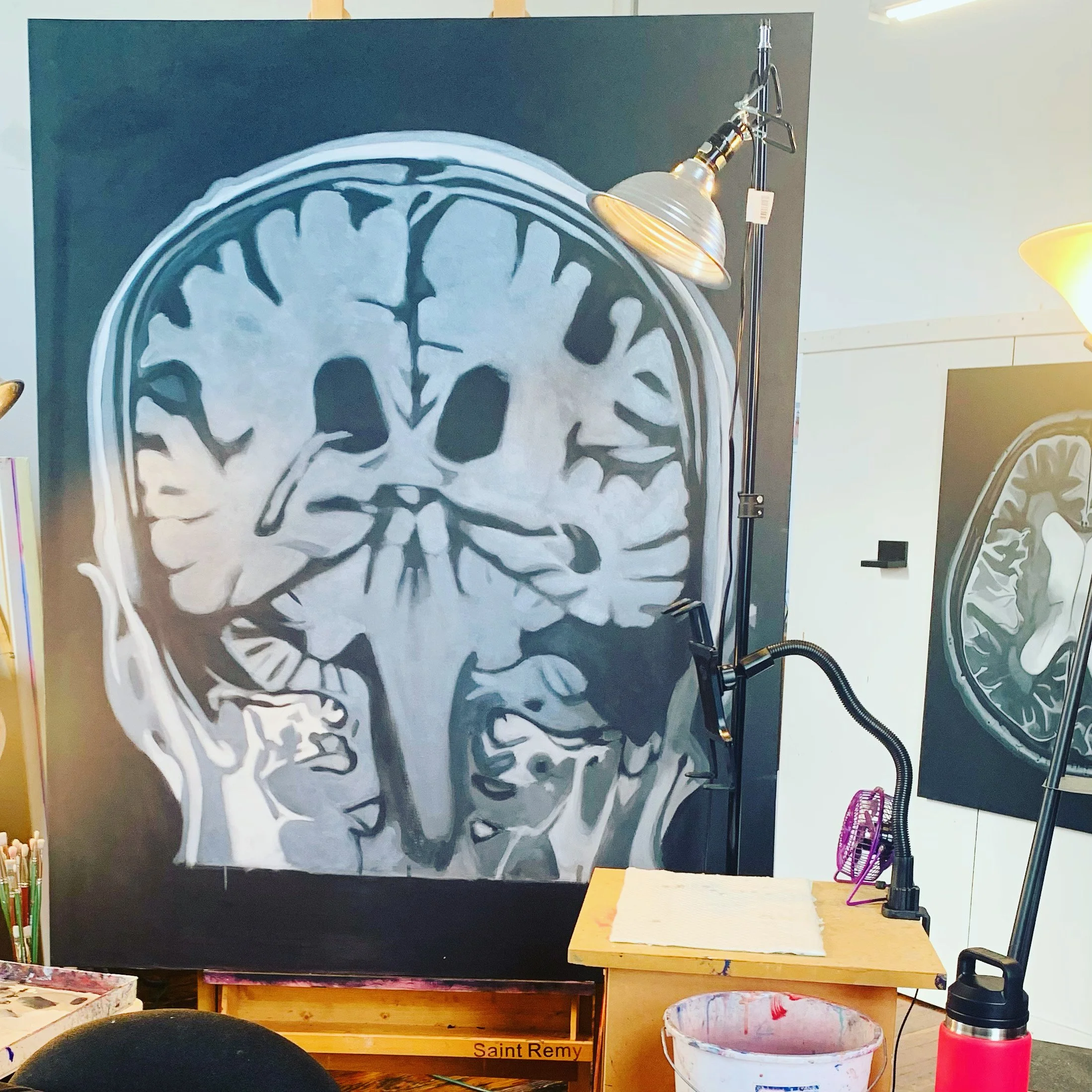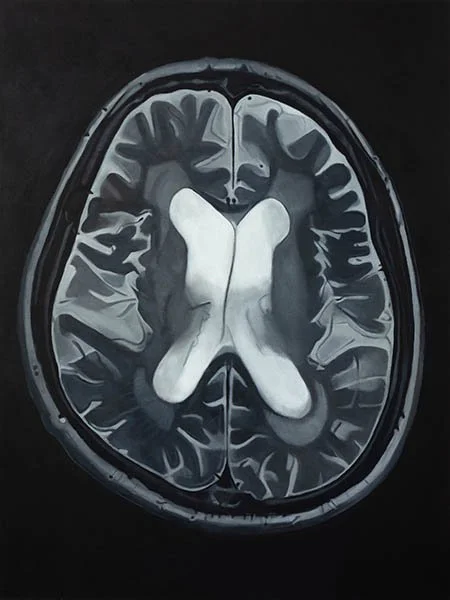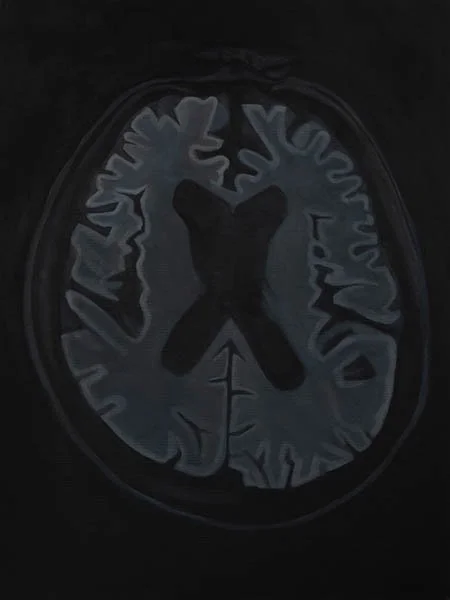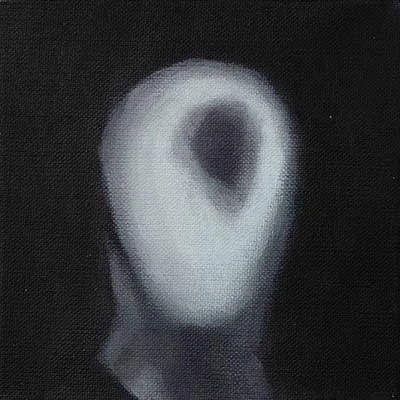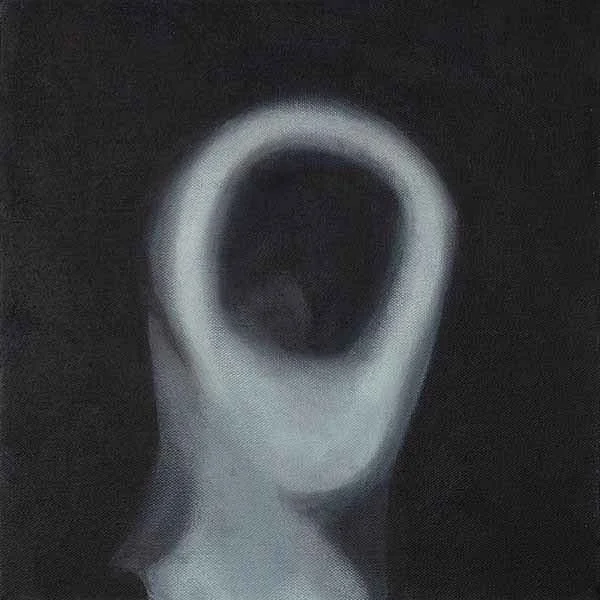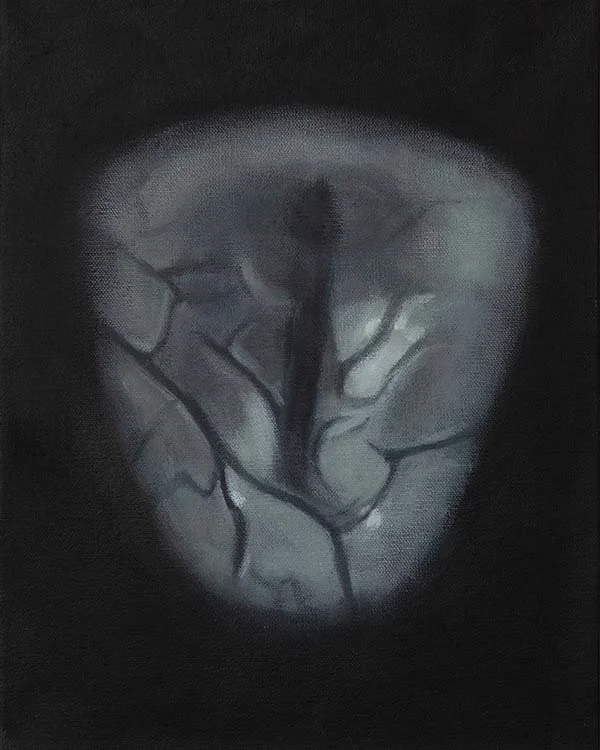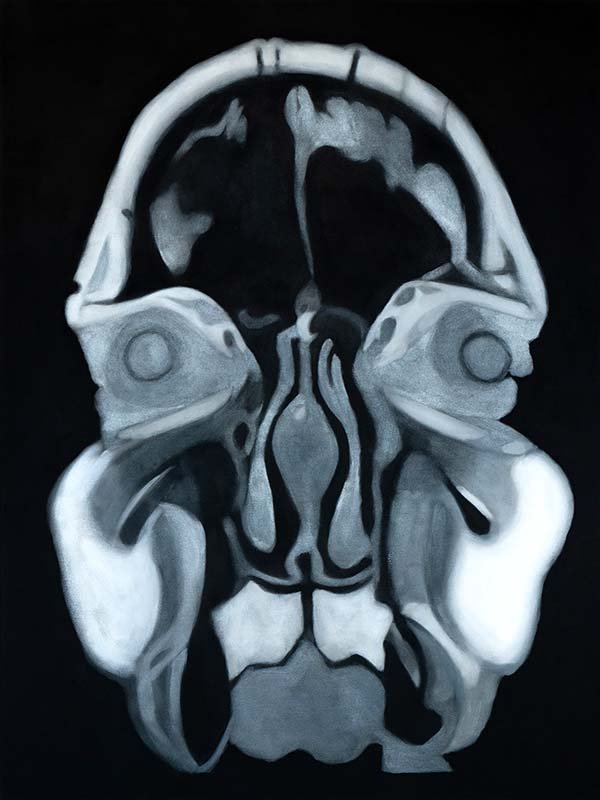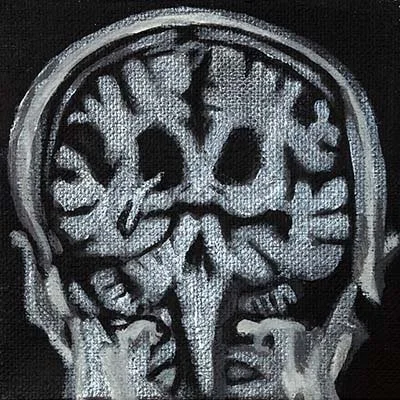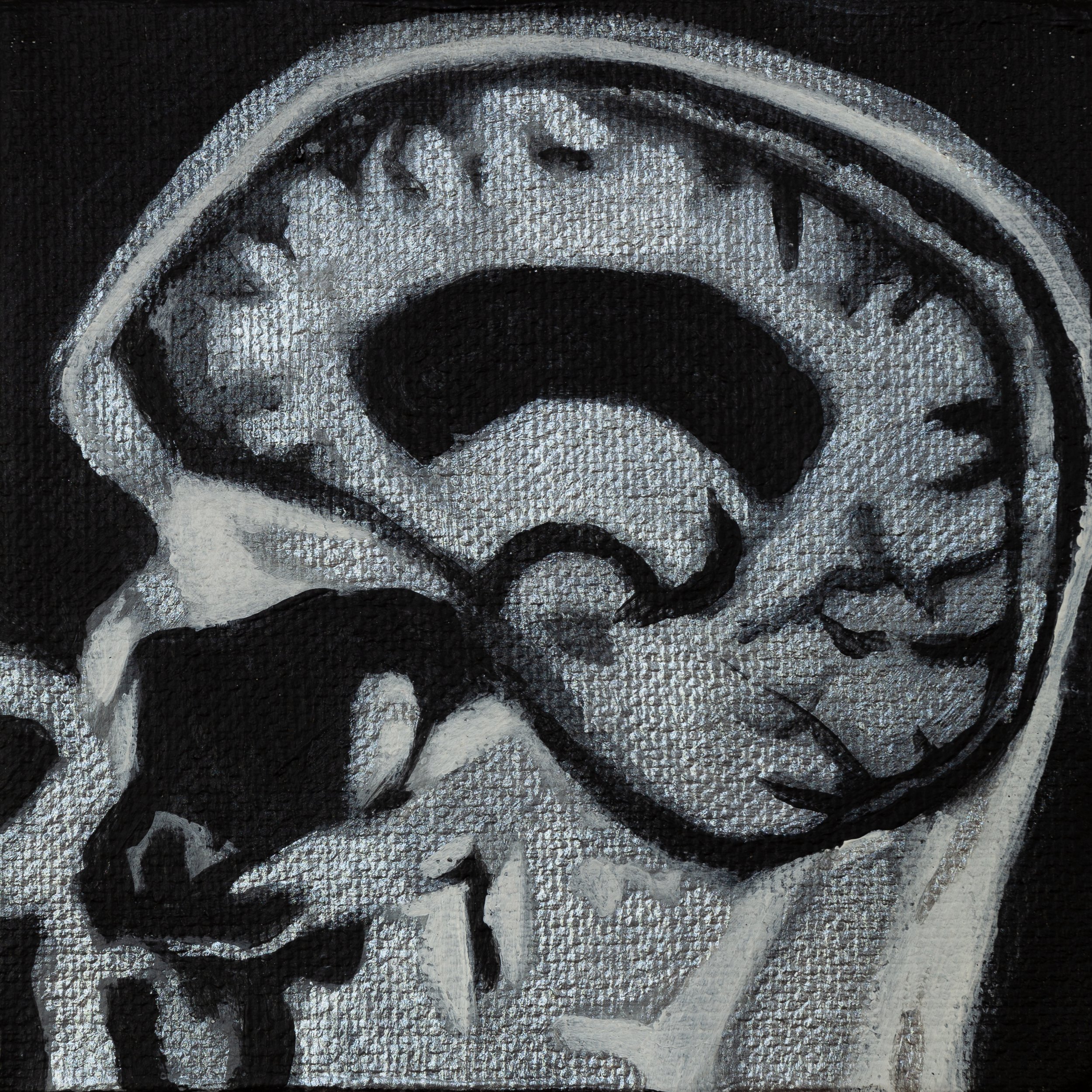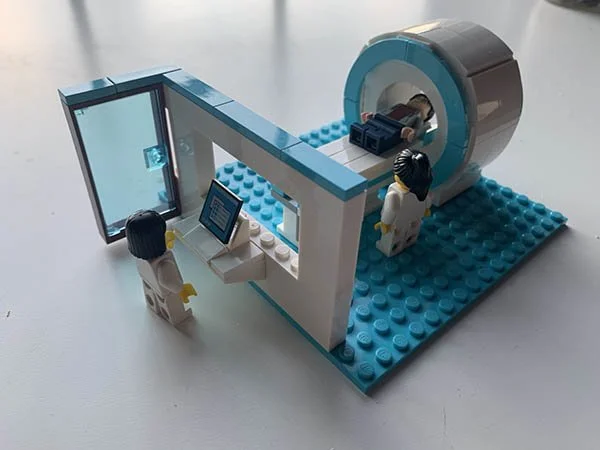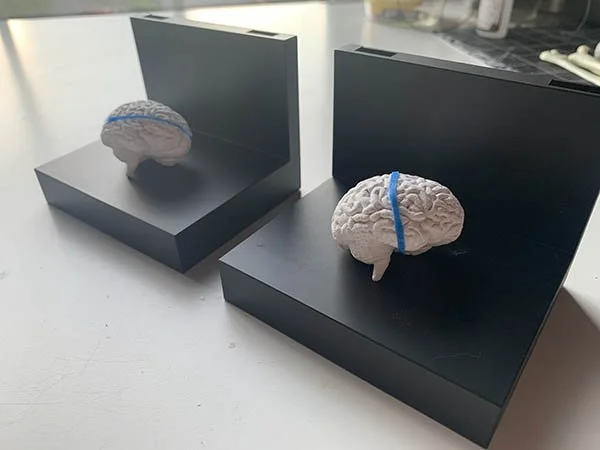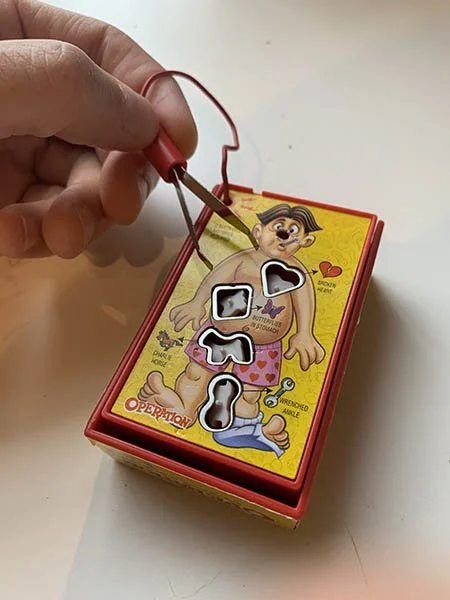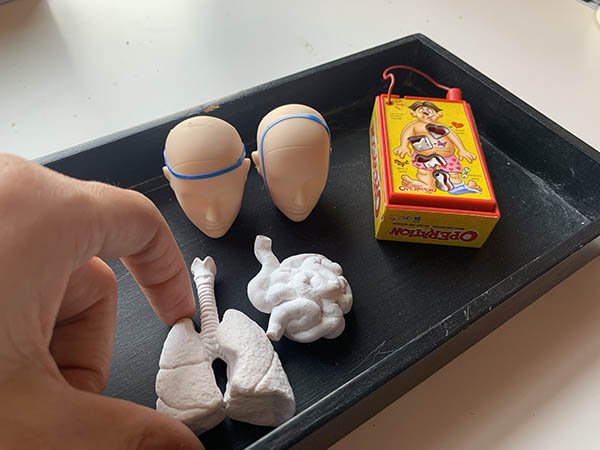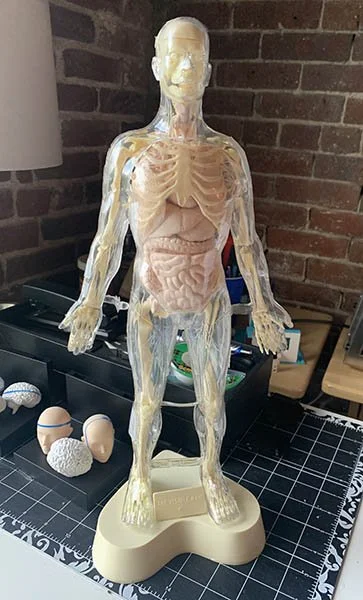RESONANCE | In Progress Work
These images are all in-progress paintings for my MRI project, currently titled Resonance. Using scans of my father’s brain, I am creating large and small scale paintings along with mixed media pieces to explore questions about disease, aging, family, science, and the brain. An exhibit of the work is scheduled for Boston in December.
This project has been immensely helped by collaborators in the science and medical fields. Dr. Cheryl Olman, Ph.D. whose lab at the University of Minnesota is working on a blazing number of projects related to the brain, fMRI and vision; and Dr. Octavio Choi, MD, PhD, forensic neuropsychiatrist at Standford University have both given me generous amounts of their time to ask questions and learn more about the brain and MRI.
Axial
AXIAL T2, 48”x36”, Acrylic on canvas
AXIAL T1, 40”x30”, Acrylic on canvas IN PROGRESS
These two images are axial views from the top of the head. I am interested in the way these scans use light and dark values in order to highlight different areas of the brain.
Coronal
COR 1, 6”x6”, Acrylic on canvas
COR 2, 12”x12'“, Acrylic on canvas
COR 3, 20”x20”, Acrylic on canvas
These images are from the coronal view (front to back) of my father’s brain. In these, I am interested in the sequence of “slices” in an MRI, the way you can visually move through the brain, increasing in detail as you go.
Axial
AXIAL 1, 11”x14”, Acrylic on canvas
AXIAL 2, 16”x20”, Acrylic on canvas
These are two axial scans, from near the top of the head.
Coronal
COR 7, 48”x36”, Acrylic on canvas
This coronal view shows the features outside the brain. I’ve started experimenting with silver paint.
Minis
Mini 1, 4”x4”, Acrylic on canvas
Mini 2, 4”x4”, Acrylic on canvas
Photos of paintings by Mike Som, Draft Studios
These mini paintings are coronal and sagittal views in which I started experimenting with silver paint. The smaller size allowed me to sketch things quickly and see the effect. These also start to give context to the brain by showing other head features.
Assemblage & Toys
MRI Lego model, designed by Bálint Kovács
Brain models with bands showing MRI slice location
I am collecting and making small assemblage pieces for the exhibit, including a Lego model designed to help kids be less afraid of MRI procedures.
Some of the items have a resonance with toys from my childhood as well as exploring the machine-like physicality of our bodies, and the ways in which disease forces us to confront our edges and limitations.
Visible Man, 1979 and 1990 models, made by Revell and Skillcraft
This Visible Man model is a version of one my father assembled when he was young. The original was released in 1959. My father had been interested in going to medical school before he eventually became a chemistry teacher and environmental engineer. I remember this model sitting on his shelf in its box; something that looked like a toy, but that we weren’t allowed to play with.
For me, assembling this model was both a fun challenge and a clandestine peek into the boyhood activities my brother and father were into, as well as the mostly male world of science and medicine.
My father collected odd bits of hardware leftover from many house projects and stored them in old peanut butter jars. These bits of finished and potential projects are a sort of multi-dimensional snapshot of my dad; both his way of thinking and the times we lived in.
For me, the jars of hardware had a similar “boys-only” feel to them when I was young. They were filled with other people’s possibilities, but so cool to look at. It’s only now as an adult that I have my own set of skills and hardware-abilities.
